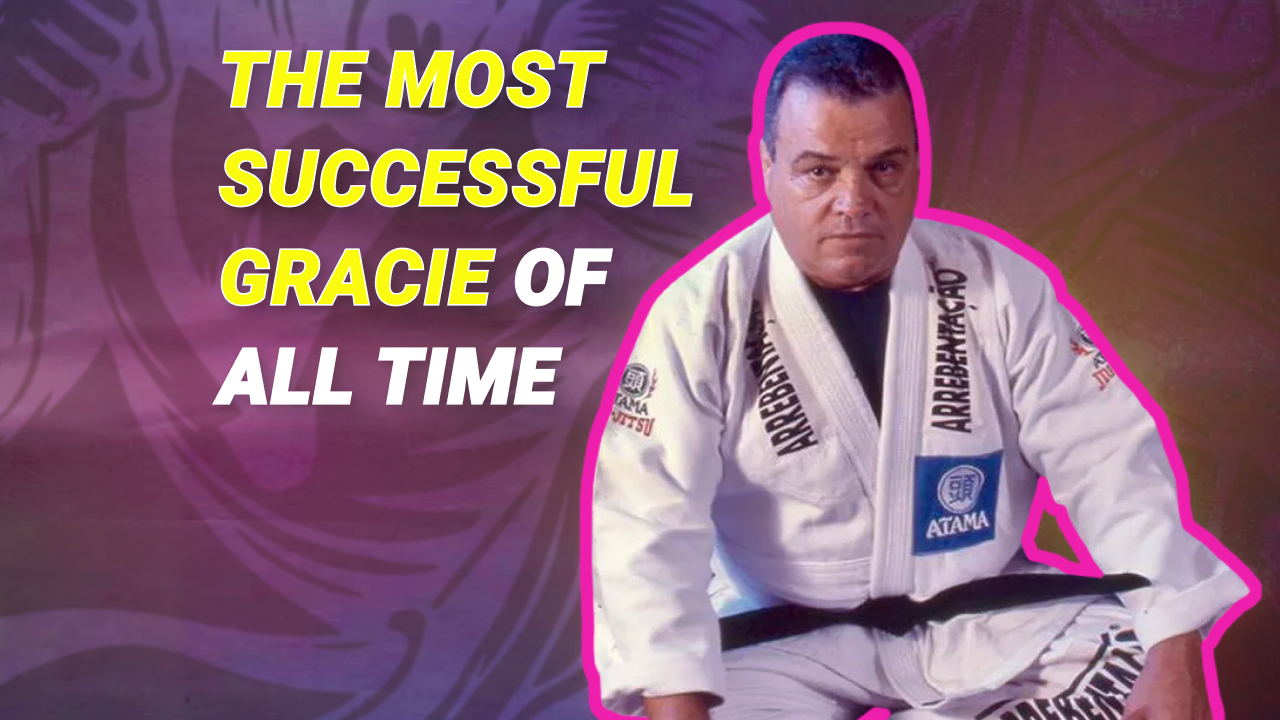The Most Successful Gracie of All Time

In Robert Drysdale’s new book, The Rise and Evolution of Brazilian Jiu-Jitsu, he argues that Carlson Gracie was the most successful Gracie fighter of all time in the sense that Carlson’s version of jiu-jitsu is what ultimately took the world by storm. While every jiu-jitsu fighter today can trace their lineage back to the Gracie family, Robert maintains that Carlson had an oversized influence on the evolution of jiu-jitsu that oftentimes gets overlooked.
You can check out Robert’s full conversation about the book with Stephen Kesting by clicking on the video link below:
Early History
Jiu-jitsu would not exist without the Gracie family, but they did not invent it in a vacuum. Instead, it evolved out of judo. Judo was developed by Kano Jigoro during the nineteenth century in Japan. As he phrased it, judo was focused on “maximum efficiency, minimum effort.” For students of jiu-jitsu, this should sound very familiar.
Judo did not just grow in popularity in Japan. Jigoro and other judo masters traveled around the world demonstrating the efficacy of the new system of martial arts. Some made it as far as Brazil, where there was also a significant stream of immigration coming from Japan. In fact, Brazil is the country with the largest number of people of Japanese descent outside of Japan. There are currently around 1.5 million people of Japanese ancestry living there.
While there were judo masters who made a splash in Brazil prior to 1914, this year is crucial in the history of Brazilian jiu-jitsu because it marks the arrival of Mitsuyo Maeda. It was Maeda who introduced the Gracie family to jiu-jitsu. The first Gracie to learn under Maeda was Carlos, who had some success as a prizefighter. However, Carlos and his brothers, Oswaldo, Gastão, George, and Hélio, would go on to develop the basis of jiu-jitsu and Hélio would go on to become the most successful fighter of this generation of Gracie.
Hélio was not a particularly big person. As a result, his style of jiu-jitsu revolved around ground fighting, which allowed him to neutralize his opponents’ most significant advantages, which was typically their size, strength, and reach. Hélio was also revered for his patience and dedication to efficiency. His method was all about conserving energy, exhausting his opponent, and saving his strength so that he could use it to exploit an opponent’s mistake.
The Second Wave
Though the Gracie family was well respected for their abilities in major fights, the way they taught students was less about training for serious competition and more about self-defense. Classes were one-on-one and revolved almost entirely on learning the 36 techniques of jiu-jitsu. There were no group classes and little if any live rolling. It was an extremely formal environment that didn’t cultivate a lot of innovation.
During the 1950s, the torch was passed from Hélio and his generation to the next generation. Ultimately, it was Hélio’s nephew, Carlson, who would take on the role of the next family champion. While he would continue to be the most formidable Gracie, having a dominant career lasting through the 1950s, 1960s, and 1970s, he did carry on the tradition established by his father and uncles. Instead, he left the academy in 1964, and he started his own gym.
There were a lot of things about Carlson that broke with tradition. First, he was more laid back. The more formal training that characterized the Gracie Academy was abandoned. Second, Carlson taught group classes. Third, Carlson recruited younger people from the beaches around Rio de Janeiro, whereas his family’s academy tended to teach self-defense to a wealthier and more buttoned-up clientele. Finally, and perhaps most importantly, Carlson’s style even in the 1950s looked more like modern MMA than what we typically think of as pure jiu-jitsu.
As a result of this shift, Carlson’s gym started producing the best fighters in Brazil. It’s not only because of Carlson’s style and the fact that the fighters are recruited to be competitors; it’s also because he created an atmosphere of competition among really talented fighters.
“You can’t evolve in a private format,” Robert says. You need to roll with other people. You also need to roll with people who are better than you and who can challenge you. Robert continues, noting that you come up with novel moves in jiu-jitsu typically when you’re improvising and trying to solve a problem on the spot. It’s almost by accident. If you don’t nurture a culture where those kinds of accidents can happen, you can’t have the kind of evolution that jiu-jitsu experienced in the 1960s and 1970s.
As Robert argues, Carlson really democratized jiu-jitsu and laid the foundation for the type of jiu-jitsu that emerged in the 1990s. Most of the coaches who created that groundswell and helped teach jiu-jitsu in the 1980s and through the early 2000s came from Carlson’s school or could very easily trace their lineage back to him (or Rolls Gracie, who founded a competing academy). According to Robert, it’s Carlson’s approach to jiu-jitsu that ultimately took the world by storm, which is why he considers Carlson to be the most successful Gracie.
The lesson to take away from all this is that anyone who wants to get better needs live training. Moreover, you should always be challenging yourself by training with as many people as you can, especially if they are better than you. You do not get better when you train in a vacuum.

